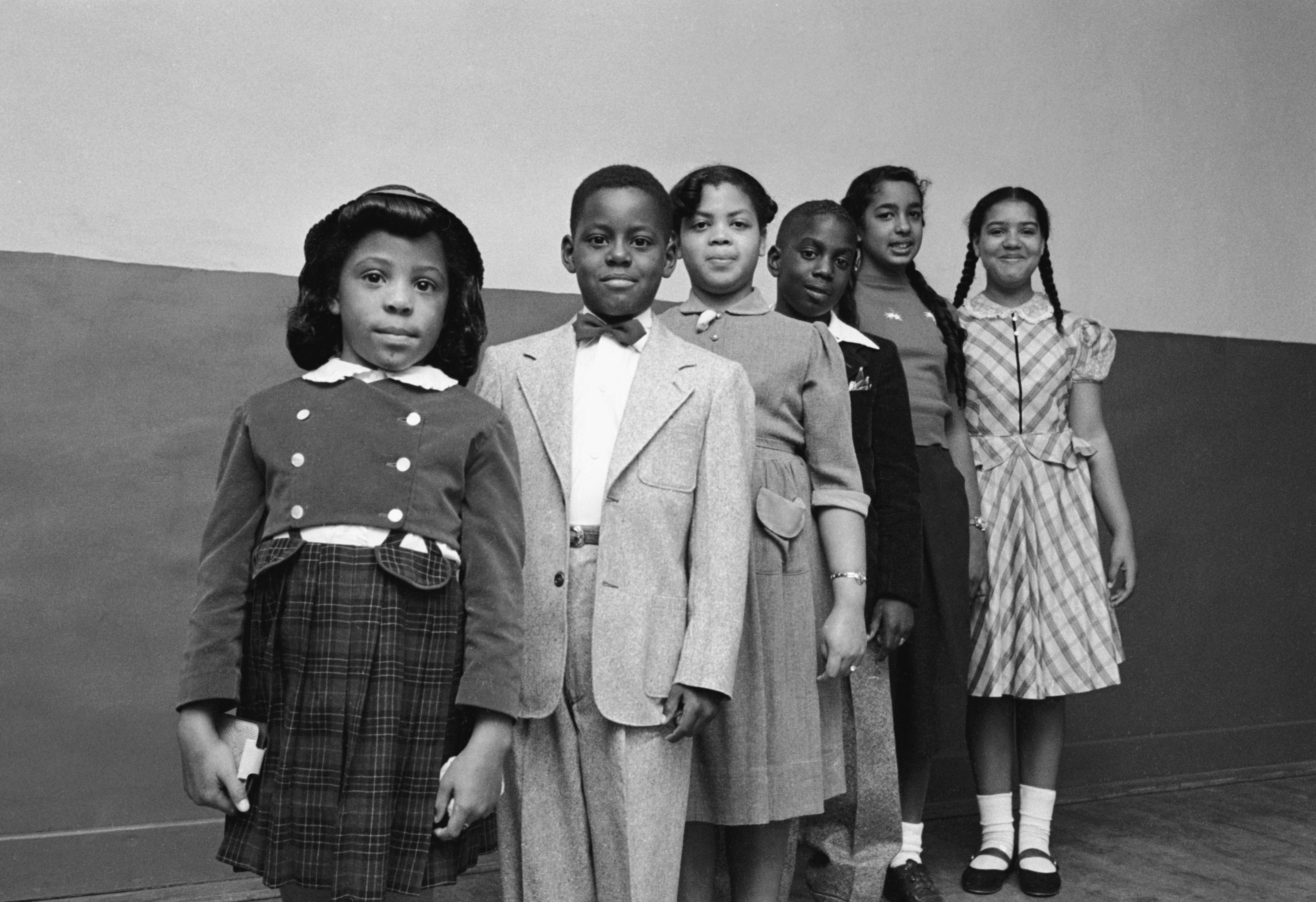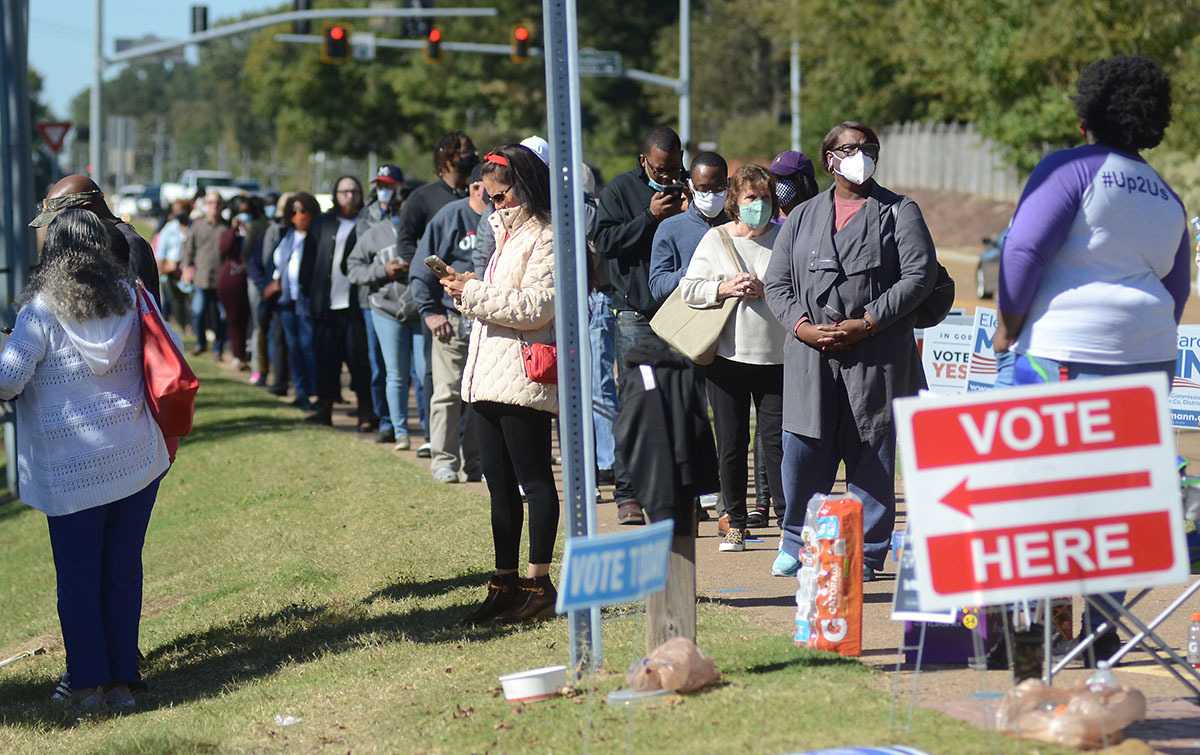Historic Event
Brown v. Board of Education of Topeka

Brown v. Board of Education of Topeka overturned the “separate but equal” precedent allowing segregation in public schools. In Brown, the Supreme Court ruled that segregated schools were fundamentally unequal and harmful. The National Association for the Advancement of Colored People’s (NAACP) Legal Defense Fund successfully argued the case, the result of years of legal research, strategy, and ground-level organizing in Black communities.
Plessy v. Ferguson
Advertisement for East Louisiana Railroad, the train company chosen for a desegregation test case.
For as long as African Americans have faced legal restrictions, they have challenged those restrictions in court. The road to Brown v. Board of Education started decades earlier with a test case organized by The Comité des Citoyens (French for Citizen’s Committee).
The Comité’s Case
The Comité des Citoyens was a multi-racial group in New Orleans that formed in 1890 to challenge segregation policies. They decided to create a test case for the Separate Car Act, which mandated separate train cars for Black and white passengers.
The group created a legal strategy and carefully planned their test: Homer Plessy, a Creole New Orleanian, (a person of mixed African, Native American, and European descent) purchased a ticket and boarded an East Louisiana Railroad train. The Committee had already contacted the railroad’s management to let them know they were staging this test and to ensure Plessy was charged with violating the Separate Car Act. Still, a New Orleans judge ruled against Plessy, arguing that segregated facilities did not contradict the 14th Amendment’s Equal Protection Clause. The case reached the Supreme Court, and the “separate but equal” precedent set by Plessy v. Ferguson made segregation lawful in the United States.
No State shall…deny to any person within its jurisdiction the equal protection of the laws.
Excerpt from the Equal Protection Clause of the 14th Amendment, 1868
Sixty Years of Legal Battles
Lloyd Gaines during the Missouri ex rel. Gaines v. Canada suit
The period between Plessy v. Ferguson and Brown v. Board of Education featured other court cases challenging segregation. Led by Charles Hamilton Houston and future Supreme Court Justice Thurgood Marshall, the NAACP’s Legal Defense Fund (LDF) won cases like Missouri ex rel Gaines v. Canada (1938), which ruled that states had to offer the same quality of education to both Black and white students. In Sweatt v. Painter (1950), the Court sided with LDF, agreeing that if separate schools were not equal, Black students could be admitted to white schools. LDF used in-depth legal research to argue the constitutionality of a variety of segregation laws.
Segregating Education
African American communities valued education despite oppressive laws and limited resources. Many individuals risked their own safety to support desegregation.
Separate but Equal in Topeka
Linda Brown in class at Monroe Elementary (first desk in second row from right)
Students outside of Buchanan School, Topeka, Kansas, 1953
In the 1950s, Topeka, Kansas had racially segregated schools. Linda Carol Brown was like many Black elementary students who were forced to attend far-away schools. Linda’s father, Oliver Brown, was a plaintiff in the case that would become Brown v. Board of Education. Brown itself was part of class action brought by 13 parents: Oliver Brown, Darlene Brown, Lena Carper, Sadie Emmanuel, Marguerite Emerson, Shirley Fleming, Zelma Henderson, Shirley Hodison, Maude Lawton, Alma Lewis, Iona Richardson, Vivian Scales, and Lucinda Todd. LDF’s plan was for the parents to enroll their children in their local school, and when each parent was denied and redirected to a Black school, the parents would form a “class” – a group of individuals impacted by the same circumstances and therefore able to file a class action suit. A Kansas state court sided with the Topeka Board of Education, but LDF took the case all the way to the Supreme Court.
Chart made by NAACP legal scholars and lawyers dissecting the 14th Amendment’s history and court precedents.
Tracing the 14th Amendment’s Original Intentions
Thurgood Marshall with Ada Lois Sipuel
Brown v. Board of Education focused on the 14th Amendment and Plessy v. Ferguson’s “separate but equal” precedent. The LDF argued that the 14th Amendment’s intent was to provide truly equal access. Supporting research examined the Reconstruction Amendments – the 13th, 14th, and 15th – and other 19th century court cases. Dr. Horace M. Bond, President of Lincoln University, served as LDF’s lead researcher. Mabel Smyth was Bond’s research assistant and Dr. Marion Wright, a scholar on United States educational history, was an expert witness.
Related Exhibition
Securing Civil Rights
The 13th Amendment abolished slavery and gave Congress the power to pass new laws protecting civil rights. With the 14th and 15th Amendments, African Americans gained full citizenship rights, including the right to vote, full access to public accommodations, and equal protection under the law.
The Supreme Court Rejects “Separate but Equal”
Spottswood Bolling, a plaintiff in the combined cases to abolish segregation and his mother reading the newspaper on May 17, 1954
Despite multiple legal arguments and decades of legal cases, the Supreme Court Justices took months to reach a decision in Brown v. Board of Education. They argued about the Court’s authority over state decision making, the possible aftereffects of desegregation, and segregation’s damage to the United States’ international reputation. Wanting to send a clear message to the American people, several Justices felt that Brown needed to be unanimous. They also saw the need to consolidate five different cases relating to school segregation, supporting school desegregation across multiple states and the District of Columbia. After lengthy debates in chambers, the Supreme Court ruled in favor of the plaintiffs, overturning Plessy v. Ferguson’s “separate but equal” precedent and outlawing state-sponsored segregation.
Featured Video
Broadcasting Desegregation
The United States Information Agency produced this newsclip the year the Supreme Court issued its Brown ruling. It was produced, in part, to promote American equality to foreign audiences.
NAACP Legal Defense Fund Lawyers Continue to Fight for Equality.
Children protesting segregation in Hillsboro, Ohio, 1956
Many Americans were angry about the Court’s decision. There was fierce backlash from white politicians in the South, including legislative and legal attacks on desegregation. One public school district in Prince Edward County, Virginia closed instead of integrating. Many whites did not want their children in school with Black children and started private schools, which were not covered by Brown. Violent responses to integration occurred across the South, and LDF brought more cases to solidify Brown’s impact, including Cooper v. Aaron (1958). Cooper concerned the Little Rock Nine, a group of Black students denied access to Central High School, an all-white school. Today, LDF continues to fight for legal equality and full educational access.


